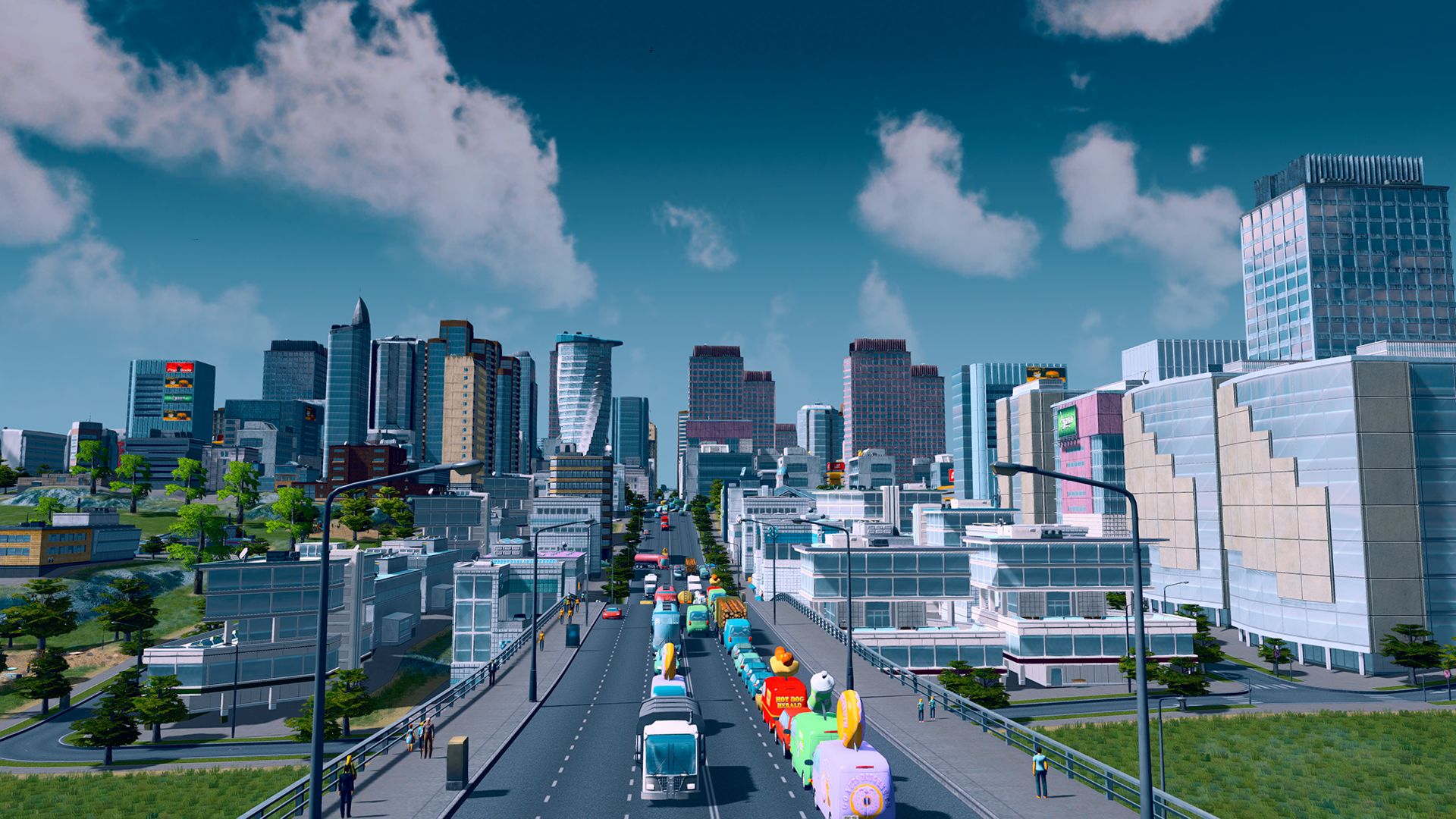Cities Skylines 2 is a popular city-building simulation game that allows players to create and manage their own virtual cities. One common problem that players often encounter is high rent, which can make it difficult for citizens to afford housing or businesses to thrive. In this comprehensive guide, we will explore the causes of high rent in Cities Skylines 2 and provide actionable solutions to fix this issue. Whether you’re a seasoned player or new to the game, these tips will help you create a thriving city with affordable rent for your citizens.
In Cities Skylines 2, high rent can be a significant challenge for players as it affects the affordability of housing and the profitability of businesses. The game’s mechanics simulate the real-world factors that contribute to high rent, such as limited space, high demand, and increasing land value. However, there are various strategies you can employ to address these issues and ensure that your citizens can afford their rent while keeping your city prosperous.
Causes of High Rent in Cities Skylines 2
Before we dive into the solutions, it’s essential to understand the underlying causes of high rent in Cities Skylines 2. By identifying these factors, you can better address the problem and implement effective solutions.
Lack of Jobs or Low Wages
One common cause of high rent is a lack of jobs or jobs that pay low wages. If your city doesn’t provide sufficient employment opportunities or if the available jobs don’t offer competitive wages, many citizens may struggle to afford their rent. To determine if this is the case, check the “citizen wealth” and “workplace availability” info views in the game. If these indicators are low, it’s likely that your citizens are facing a poverty-driven rent problem.
Limited Space and High Demand
Another factor that can contribute to high rent is limited space and high demand for residential, commercial, or industrial zones. When there is a scarcity of available zones in your city, the cost of renting in existing zones increases. To assess the demand for different zones, check the zoning demand indicator in the bottom left corner of the screen. If the demand is high, it’s likely that rent prices are also high due to limited space.
Increase in Land Value
The value of land in Cities Skylines 2 can significantly impact rent prices. When the land value increases, so does the rent. This increase in land value may be due to the presence of public services, recreational areas, or other amenities. As the land value rises, even citizens with decent jobs may struggle to keep up with the high rent in these desirable areas. To determine if land value is the cause of high rent, check the land value info view in the game.
How to Fix High Rent in Cities Skylines 2
Now that we understand the causes of high rent in Cities Skylines 2 let’s explore actionable solutions to address this issue and create a more affordable living environment for your citizens.
Provide Higher Education for Citizens
One effective strategy to combat high rent in residential areas is to invest in higher education. In Cities Skylines 2, highly educated workers earn better wages, which increases their ability to pay rent. By building colleges and universities in your city, you can attract educated residents and increase their income. This, in turn, will help alleviate the high rent problem in residential zones.
To provide higher education for your citizens, consider the following steps:
- Build colleges and universities in strategic locations throughout your city.
- Ensure easy access to educational institutions by integrating them into well-connected transportation networks.
- Monitor the education level of your citizens and make adjustments to meet the demand for higher education.
Create More Job Opportunities
To address high rent caused by a lack of jobs or low wages, it’s crucial to provide ample employment opportunities for your citizens. By increasing the number of jobs and improving their quality, you can boost your citizens’ income and enable them to afford their rent. Here are some steps to consider:
- Build commercial and office zones near residential areas to create job opportunities for your citizens.
- Ensure good access to large industrial zones to support the growth of businesses and employment.
- Monitor the “workplace availability” info view to identify any job shortages and make adjustments accordingly.
Satisfy the Demand for Zones
If limited space and high demand are causing high rent in your city, the solution is to expand and satisfy the demand for residential, commercial, industrial, and office zones. By continually expanding your city and providing ample space for new zones, you can keep rent prices in check. Consider the following steps:
- Purchase new blocks of land to accommodate the growing demand for zones.
- Keep an eye on the zoning demand indicator and prioritize the construction of zones with high demand.
- Ensure a balanced distribution of zones throughout your city to avoid concentration and potential rent spikes.
Increase High-Density Zones
To address the lack of space and high demand, consider upgrading your low-density zones to high-density ones. As your city grows and land becomes more valuable, it becomes economically inefficient to use large plots of land for single homes and businesses. By increasing the density of your zones, you can accommodate more residents and businesses in a smaller area, effectively reducing rent prices. Follow these steps:
- Identify low-density zones that have high land value or are experiencing high rent problems.
- Upgrade these zones to high-density residential, commercial, or office zones using the game’s zoning tools.
- Monitor the impact of the density upgrade on rent prices and make adjustments as necessary.
Decrease Land Value
If the high land value is driving up rent prices in your city, consider decreasing the land value to make housing more affordable. This can be achieved by removing certain services and recreational areas that increase land value. Here’s what you can do:
- Use the map overlay menu to access the land value filter and identify buildings or areas that contribute to high land value.
- Consider relocating or downsizing certain services, parks, or recreational facilities to decrease the land value.
- Monitor the impact of these changes on rent prices and adjust accordingly.
Relocate Industrial Zones
In some cases, the high rent problem may be specific to industrial zones. If the attractive parts of your city, such as commercial or residential areas, are encroaching on the original industrial zones, the land value in these areas may increase, leading to high rent. To fix this issue, consider relocating the industrial zones to cheaper areas. Follow these steps:
- Identify industrial zones that are close to high-value areas.
- Find suitable and affordable locations further away from the city center to relocate the industrial zones.
- Monitor the impact of the relocation on rent prices and adjust if necessary.
Bulldoze and Rebuild
While not the ideal solution, bulldozing high-rent buildings and allowing new occupants to rebuild can sometimes alleviate the high rent problem. This approach gives new tenants an opportunity to occupy the space and potentially afford the rent. However, use this method sparingly, as it may disrupt the stability of your city. Consider the following steps:
- Identify high-rent buildings that have persistent rent payment issues.
- Bulldoze these buildings and allow new occupants to rebuild.
- Monitor the rent payment status of the new occupants and make adjustments if needed.
Beware of Tax Reduction and Low-Rent Housing
While lowering taxes or building low-rent housing may seem like obvious solutions to high rent, they may not always be effective in Cities Skylines 2. Lowering taxes can increase the demand for housing in your city, potentially exacerbating the high rent problem. Similarly, low-rent housing may not generate enough demand, even if a significant portion of your city is experiencing high rent. Instead, focus on the strategies mentioned earlier to address the root causes of high rent in a more effective manner.
The Potential High Rent Bug
Some players have reported a potential high rent bug in Cities Skylines 2, where cities with wealthy citizens and ample housing and job opportunities still face high rent issues. While this may be a bug in the game, it’s important to note that the solutions mentioned in this guide can still be applied to mitigate the high rent problem. Even if a future patch addresses the bug, implementing these strategies will ensure a more stable and affordable rent environment in your city.
Conclusion
Solving high rent problems in Cities Skylines 2 requires a comprehensive approach that addresses the underlying causes and implements effective solutions. By providing higher education, creating more job opportunities, satisfying the demand for zones, increasing high-density zones, decreasing land value, relocating industrial zones, and occasionally bulldozing and rebuilding, you can create a city with affordable rent for your citizens. Remember to be cautious with tax reduction and low-rent housing, as they may not always yield the desired results. By following these strategies, you can build a thriving city where residents can comfortably afford their rent and businesses can flourish.








